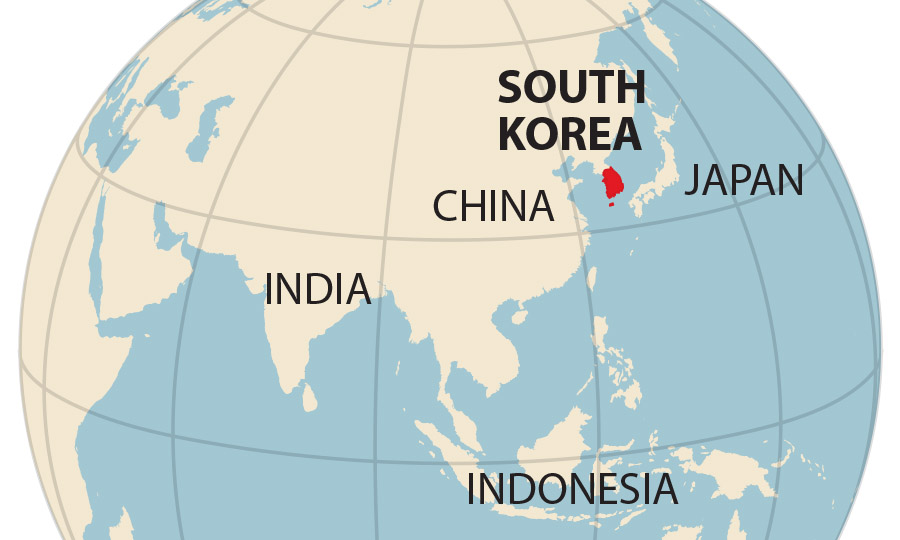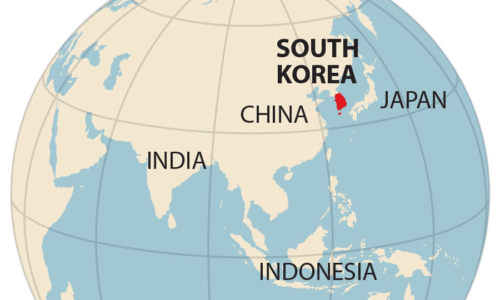IEEFA South Korea: Doosan Heavy – time for a forensic audit

 (IEEFA South Korea) – A new report finds the past five years have been dire for Korea’s Doosan Heavy Industries & Construction and its shareholders, with the company enjoying a market capitalization today of just USD $1.0 billion following a massive drop in share price of nearly 75%.
(IEEFA South Korea) – A new report finds the past five years have been dire for Korea’s Doosan Heavy Industries & Construction and its shareholders, with the company enjoying a market capitalization today of just USD $1.0 billion following a massive drop in share price of nearly 75%.
Produced by the Institute for Energy Economics and Financial Analysis (IEEFA), the report, Doosan Heavy – Time for a Forensic Audit, explores the company’s carefully-worded financial accounts and its domestic and global growth potential and finds serious issues with both.
Based on IEEFA’s review, Doosan Heavy’s 2018 audited financial accounts offer up at least 10 red flags. This view is validated by an analysis of the more recent, but unaudited, first-half 2019 results.
TAKEN TOGETHER, DOOSAN HEAVY’S FINANCIAL RESULTS RAISE IMPORTANT FIDUCIARY QUESTIONS not just for shareholders, but also for the bankers, investors, and counter-parties who may be asked to untangle the company’s finances.
Further, Doosan Heavy appears to have misread the direction of power markets over the past three years and like many national champions in the power sector, the company has lost much of its domestic and global growth potential.
Can Doosan Heavy’s core business meet its financial and business obligations?
Author of the report Melissa Brown, Director of Energy Finance Studies at IEEFA Asia, says the challenge now is to determine whether Doosan Heavy’s core business can meet its financial and business obligations.
“The careful wording of Doosan Heavy’s audited accounts signals that the company may be close to the boundaries of international accounting standards,” says Brown.
“Over the past five years, the company has had three different auditors. This alone may give customers, lenders, and investors reason to examine the audited accounts to understand any new issues.”
The company has not registered a profit since 2013 and has reported a non-stop string of losses totalling more than KRW 2.6 trillion (USD 2.1 billion) despite its heavy reliance on an array of financial and accounting moves and annual restatements.
“Exacerbating this, the company’s financial health has remained inextricably linked to a high-risk pipeline of domestic and developing market fossil fuel projects,” according to Brown. “For Doosan Heavy, problems in the marketplace and pressure on the balance sheet are intertwined.”
THE REPORT FINDS DOOSAN HEAVY’S STRATEGY MAINTAINED HIGH DEPENDENCE ON NUCLEAR AND FOSSIL FUEL POWER rather than reading the trends and shifting to the renewable energy options that are now re-shaping global power markets.
Misreading the shift to renewables puts Doosan in competition with Chinese and Japanese equipment providers
This has forced the company into direct competition with Chinese and Japanese equipment providers for an assortment of projects in Southeast Asia and the Middle East, for which they are being heavily subsidised by Korea’s major banks, to their peril.
“The company is struggling with a structurally unprofitable business model and is not keeping pace with the investment required to develop distinctive clean technology solutions that fast-growing Asian power markets will reward,” says financial analyst Ghee Peh, co-author of the report.
The report finds the company’s quarterly results demonstrate some key stress points that define its financial fragility. For instance, in the fourth quarter of 2018, the company wrote off bad-debt expenses of KRW 346 billion (USD 285.2 million).
DOOSAN’S RECENT TRACK RECORD RAISES IMPORTANT QUESTIONS about whether the order book is in structural decline, having seen a net decrease of KRW2.0 trillion (USD 1.7 billion) since 2016.
“With their most significant projects near completion, the company’s urgent need for new business is no surprise,” says Brown. “Its highly-leveraged balance sheet is already under pressure, particularly as it needs to refinance KRW 1.2 trillion (USD 1.0 billion) in the next 2.5 years.”
The report notes while Doosan Heavy has employed a range of strategies to keep the optics of its leverage and cash flow situation steady, its strategy does not support profitable operations.
Doosan’s cash flow statement may be less robust than expected
Essentially, Doosan has been reporting higher cash by capturing the apparent difference between the way a number of items were valued in its income statement and how they were presented in the cash flow statement. As a result, Doosan Heavy’s cash flow statement may be more vulnerable to estimation errors and less robust than would normally be expected.
“If some of these valuation-sensitive adjustments do not represent actual cash, it is possible that the company’s financial burden could be higher than reported,” says Peh.
IEEFA estimates the current portion of Doosan Heavy’s long-term debt now accounts for 60% of total debt, signalling the need for continued efforts to raise new sources of funding in light of negative operating trends. And although the debt ratios improved slightly in the first half of 2019, the underlying cash flow trends were negative, suggesting that the positive trend for debt ratios could reverse if markets prove unreceptive through the end of the year.
“Our analysis raises questions about the company’s ability to continue to find funding in volatile market conditions,” says Peh. “Doosan Heavy’s reliance on funding provided with guarantees from KEXIM and KB Kookmin Bank is a significant and rising portion of the company’s bond exposure.”
Further, since the beginning of January 2017, Doosan Heavy shares have fallen 75.1%.
“THE FINANCIAL MARKET’S LACK OF CONFIDENCE IN DOOSAN HEAVY’S BUSINESS PROSPECTS IS IMPOSSIBLE TO IGNORE,” says Brown.
Credit-rating agencies have downgraded Doosan to ‘BBB’ with a negative outlook
The report underlines that domestic credit-rating agencies have been backing away from Doosan Heavy, clearly evident in the May 2019 downgrade of its credit rating to BBB with a negative outlook—a rating just one notch above non-investment grade.
“While Doosan Heavy continues to be upbeat about new overseas projects in their public relations, unfortunately for investors, there remain many good reasons to be cautious, particularly as many of those projects rely on industries in terminal decline, such as thermal coal,” says Brown. “The financial problems the company now faces cannot be solved easily.”
This should be of concern to South Korea’s top financial regulator, the Financial Supervisory Service (FSS) as well as leading domestic and global lenders, she notes.
“Added caution from the credit rating agencies who rate the bonds for investors should also be encouraged,” Brown says.
Full report: Doosan Heavy – Time for a Forensic Audit
Report in Korean: 두산중공업―부정적발감사가 필요한 시점
Media Contact: Kate Finlayson ([email protected]) +61 418 254 237
Author Contact: Melissa Brown ([email protected]) and Ghee Peh ([email protected])
About IEEFA: The Institute for Energy Economics and Financial Analysis (IEEFA) conducts research and analyses on financial and economic issues related to energy and the environment. The Institute’s mission is to accelerate the transition to a diverse, sustainable and profitable energy economy. www.ieefa.org











